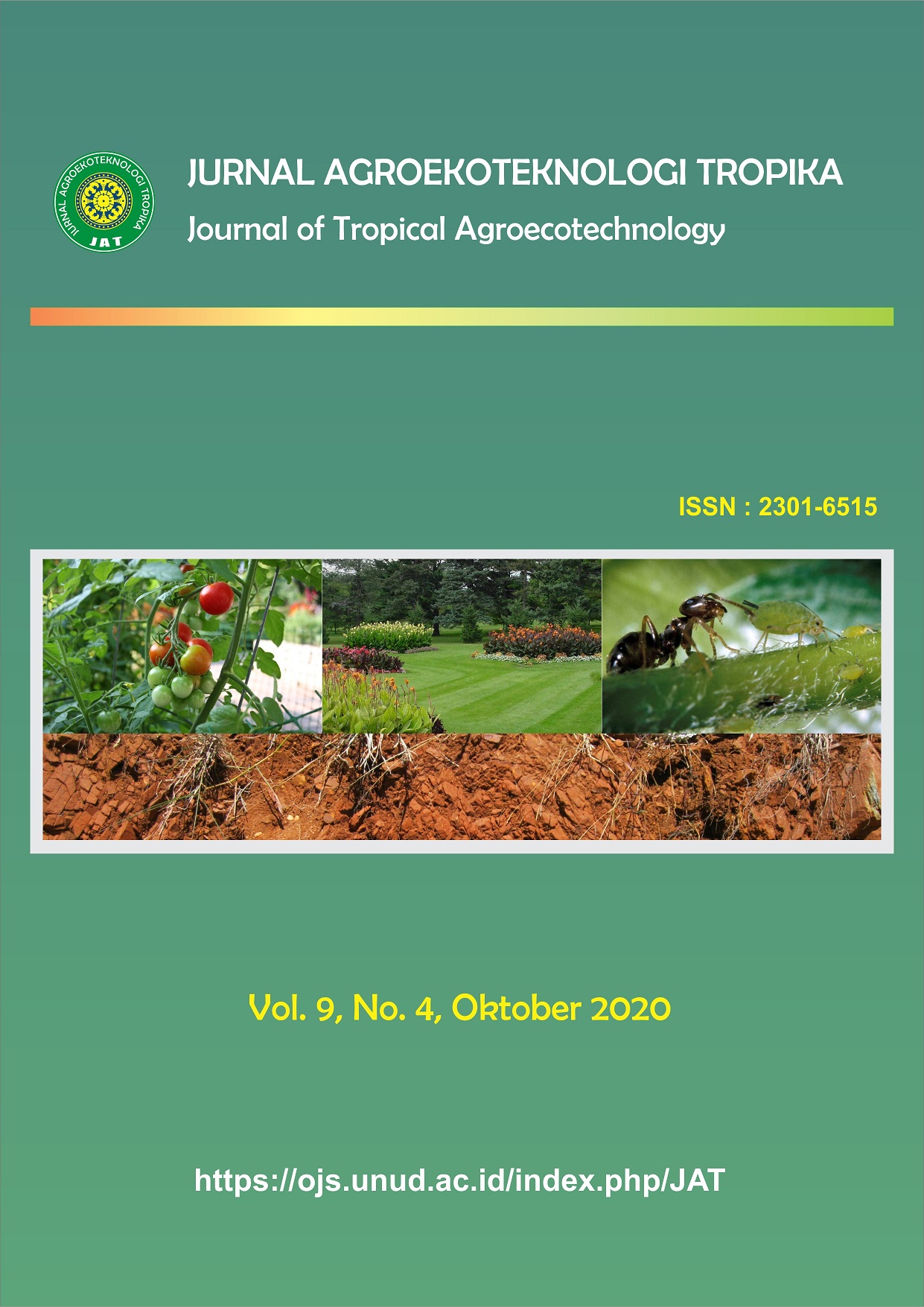Pemetaan Potensi dan Status Kerusakan Tanah Lahan Pertanian Kecamatan Buleleng, Kabupaten Buleleng
Abstract
Mapping of Potential and Status of Damage to Agricultural Land in Buleleng District, Buleleng Regency
Increased biomass production activities can result in soil damage due to a decrease in soil quality and function that can threaten the continuity of human life. The purpose of this study is to determine the potential for soil damage, determine the status of soil damage, and make maps of the potential and status of land damage. The research was conducted in Buleleng District using scoring methods and overlaying of potential soil damage, the parameters analyzed were land use, soil type, slope and rainfall. Determination of the status of soil damage based on the procedure for measuring the standard criteria for soil damage. The parameters analyzed were content weight, solum depth, surface rockness, fraction composition, weight content, total porosity, permeability, pH, DHL, and the number of microbes. In the study area there are 9 homogeneous land units (HLU). Based on the research results obtained 2 classes of potential soil damage, namely low potential soil with a score of 19-24 and moderate with a score of 25-32. Areas in Buleleng District that have low potential for soil damage are found in SLH I, III, V, VI, and IX covering an area of ??1856.12ha (67.13%), and the potential for moderate land damage is in SLH II, IV, VII and VIII covering an area of?? 908.68 ha (32.87%). The status of soil damage in Buleleng District was lightly damaged with a score of 4. The limiting factor for the study area was permeability. These parameters get a relative frequency value of 88.89% with a score of four. Areas in Buleleng District that have low potential for soil damage are found in SLH I, III, V, VI, and IX covering an area of ??1856.12ha (67.13%), and the potential for moderate land damage is in SLH II, IV, VII and VIII covering an area of 908.68 ha (32.87%). The status of soil damage in Buleleng District was lightly damaged with a score of 4. The limiting factor for the study area was permeability. These parameters get a relative frequency value of 88.89% with a score of four.



